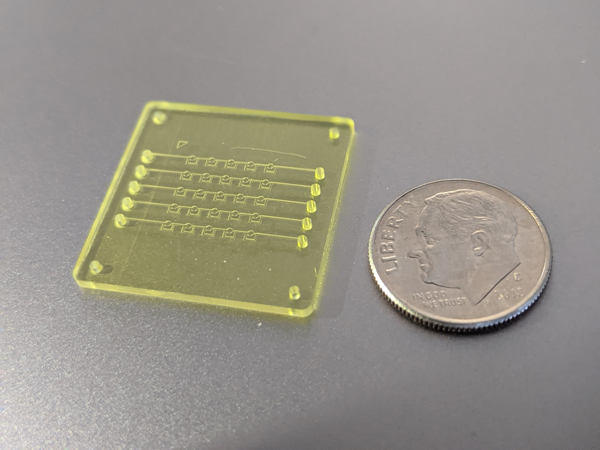
Sept. 23, 2020 - UC Irvine’s Center for Advanced Design and Manufacturing of Integrated Microfluidics (CADMIM), a National Science Foundation-backed collaboration between university researchers and industry partners, has received a new NSF grant to continue developing a microfluidic device that can sustainably monitor and improve the breeding of agricultural crops.
Plant researchers constantly search for ways to adapt crops to be more nutritious, resource-efficient and resilient in a variety of climates. Genomics, and more specifically genotyping, which measures genetic identity, play a growing role in this ongoing endeavor to breed new crop varieties. Agricultural companies often perform hundreds of thousands of these genetic measurements each day.
The $250,000 Partnerships for Innovation grant from the NSF Division of Industrial Innovation and Partnerships leverages technology created over the last couple of years by UCI’s CADMIM researchers. Under the direction of biomedical engineering Associate Professor Elliot Hui, the team is creating a device that automates the measurement of genetic markers across many plants simultaneously, using microfluidics. The process uses fewer supplies, runs reactions faster and enables the completion of four times the number of tests in a given timeframe compared to current technology, all at a fraction of the cost.
The project, a partnership with agricultural plant seed producer KWS SAAT SE & Co., has already achieved proof-of-concept, and the new funds will advance device development and production. The microfluidic device is loaded with DNA samples from a number of plants, as well as tags specific to a panel of genetic markers. The samples and tags are divided into tiny droplets within the channels of the device, which then routes and arranges them so each plant DNA sample is paired with every tag. The paired droplets then are merged to perform a series of reactions that reveal the genetic identity of each plant.
The team, which has already demonstrated the capability of the system to perform the operations required to prepare the genetic measurement reactions, will use the new NSF grant to fund the transition to a platform that will be faster to manufacture and more conducive to performing the biochemical reactions. They will also work to scale up the device – to approximately 6,000 simultaneous measurements – as well as create a fully functional prototype.
The Partnerships for Innovation grants are specifically targeted to bridge the gap between academic research and commercialization. Through the NSF iCorp. Program, the research team will interview 100 potential customers to identify customer needs accurately as it further designs the microfluidic system. A large component of the grant also focuses on leadership and innovation. Hinesh Patel, a member of Hui’s lab who is working toward a dual medical degree and a doctorate in biomedical engineering, will receive training in entrepreneurship to help the team successfully produce and market the technology.
While the original research was geared to the plant agriculture industry, the technology can extend easily to other applications, including medical research, health care, community flu surveillance and consumer markets like genealogy.
“CADMIM has always positioned itself at the interface of scientific research and entrepreneurship with the common goal of translating technologies from the bench to the market,” Patel says. “This project is a perfect example of that, and we are excited that this grant is helping us make our vision of the product a reality.”
-Anna Lynn Spitzer
